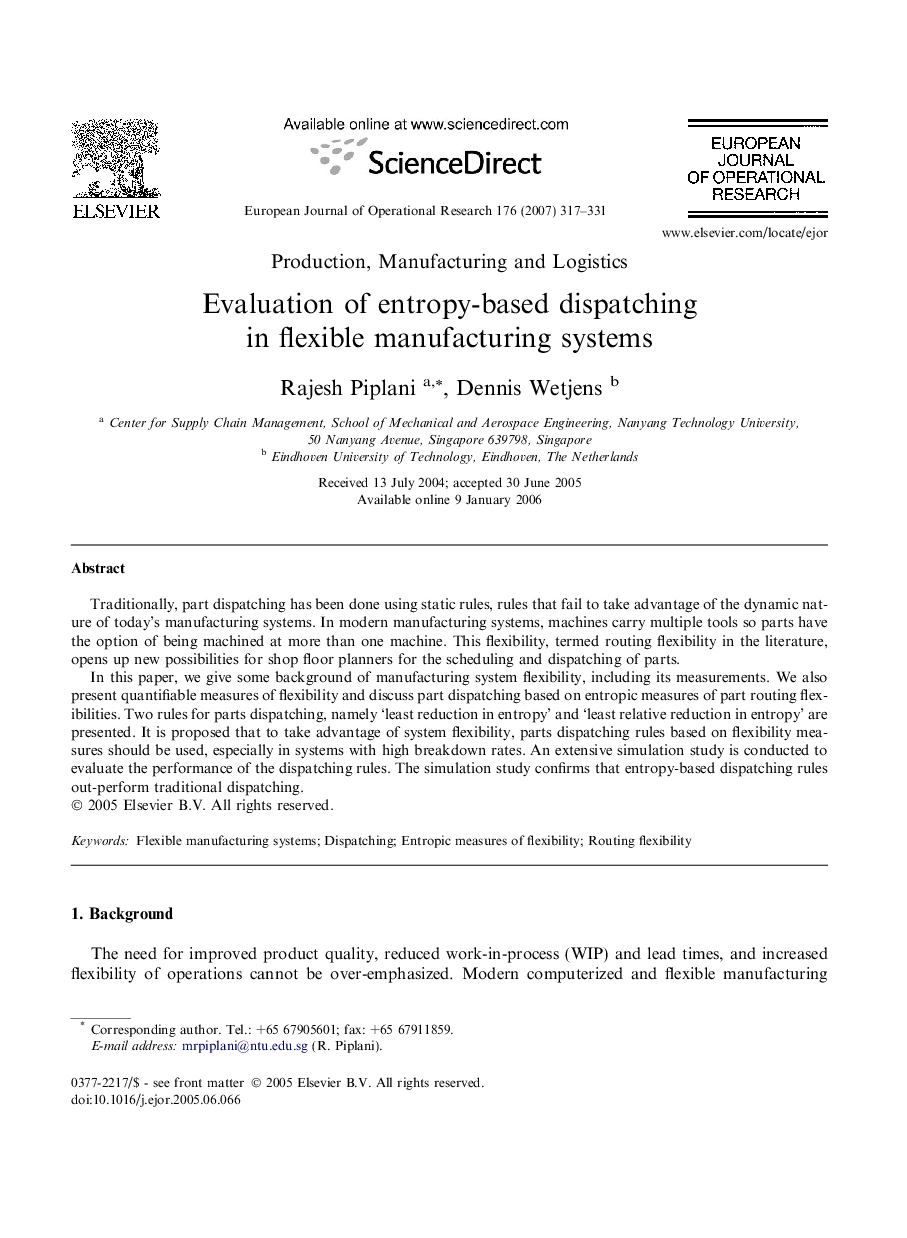| Article ID | Journal | Published Year | Pages | File Type |
|---|---|---|---|---|
| 479356 | European Journal of Operational Research | 2007 | 15 Pages |
Traditionally, part dispatching has been done using static rules, rules that fail to take advantage of the dynamic nature of today’s manufacturing systems. In modern manufacturing systems, machines carry multiple tools so parts have the option of being machined at more than one machine. This flexibility, termed routing flexibility in the literature, opens up new possibilities for shop floor planners for the scheduling and dispatching of parts.In this paper, we give some background of manufacturing system flexibility, including its measurements. We also present quantifiable measures of flexibility and discuss part dispatching based on entropic measures of part routing flexibilities. Two rules for parts dispatching, namely ‘least reduction in entropy’ and ‘least relative reduction in entropy’ are presented. It is proposed that to take advantage of system flexibility, parts dispatching rules based on flexibility measures should be used, especially in systems with high breakdown rates. An extensive simulation study is conducted to evaluate the performance of the dispatching rules. The simulation study confirms that entropy-based dispatching rules out-perform traditional dispatching.
